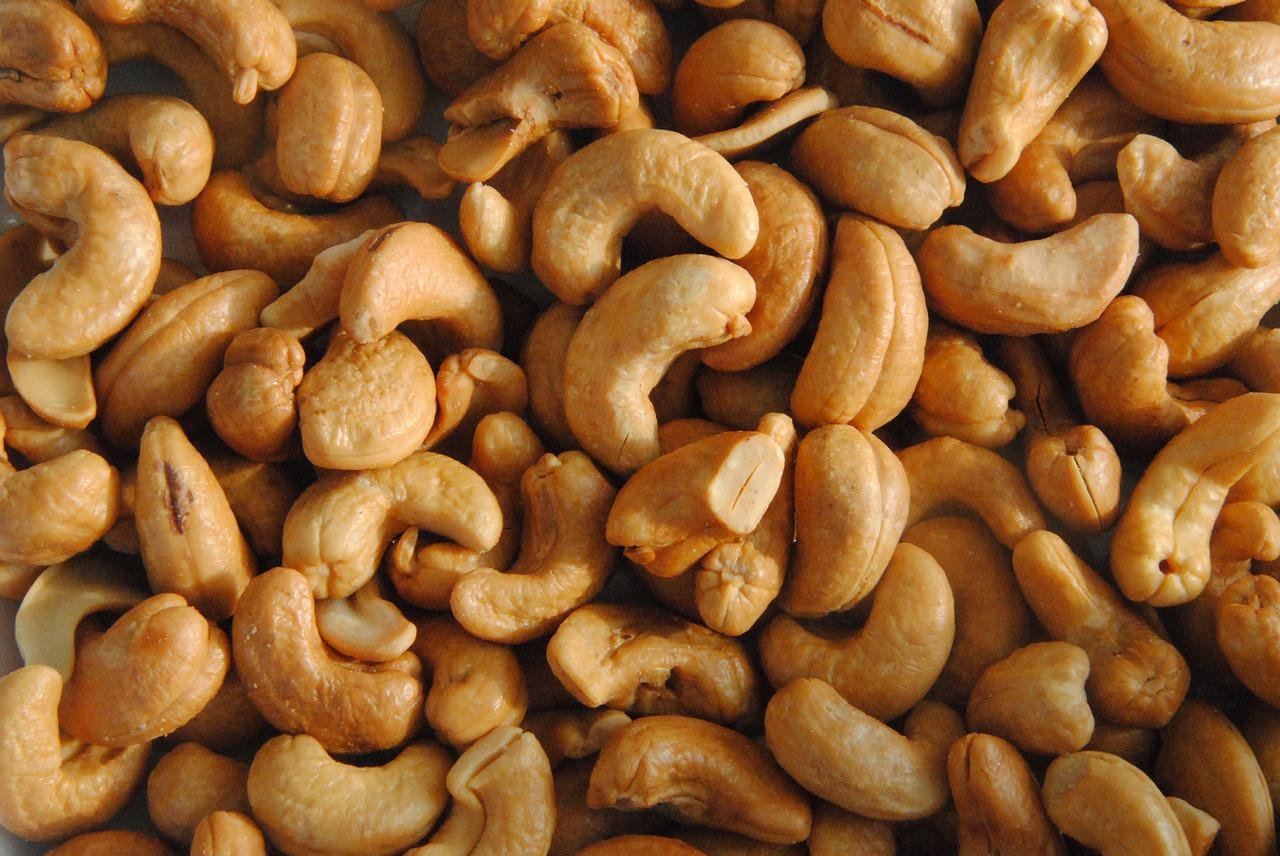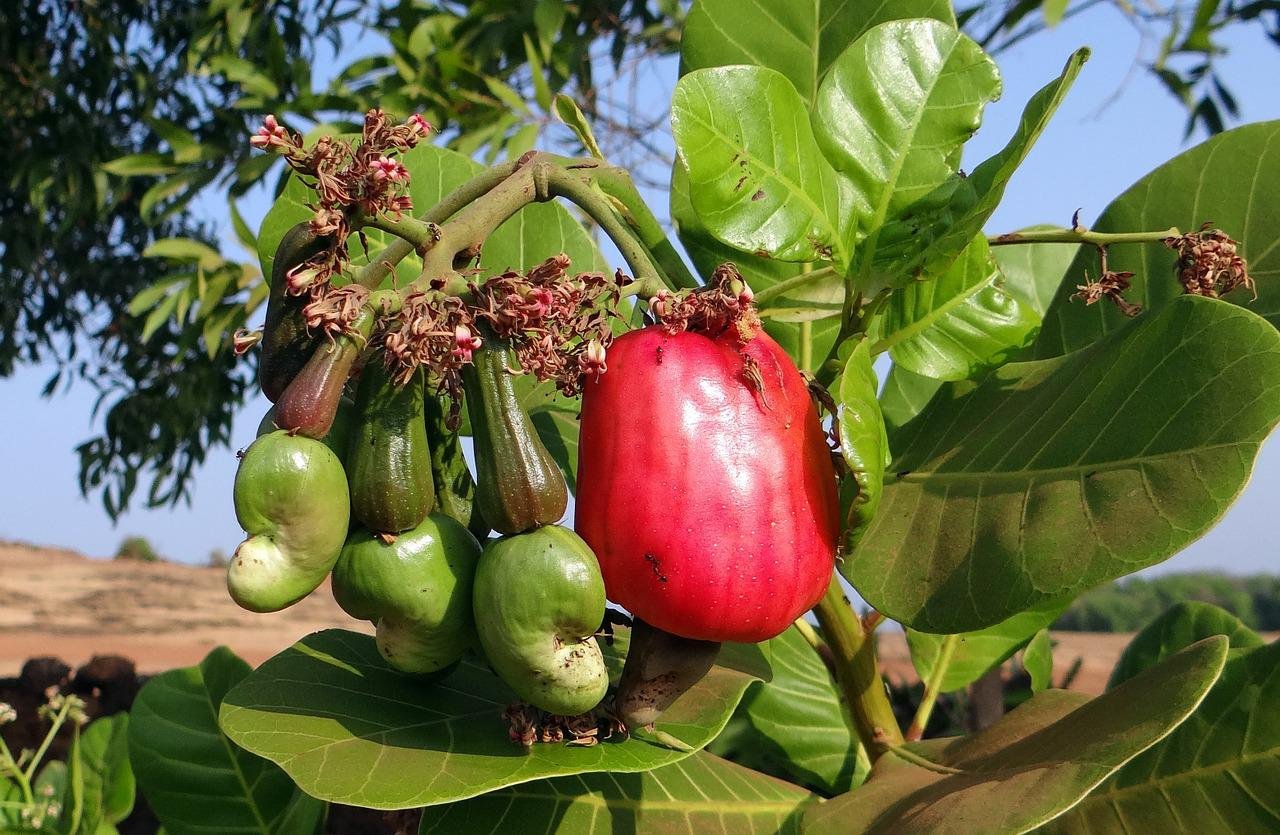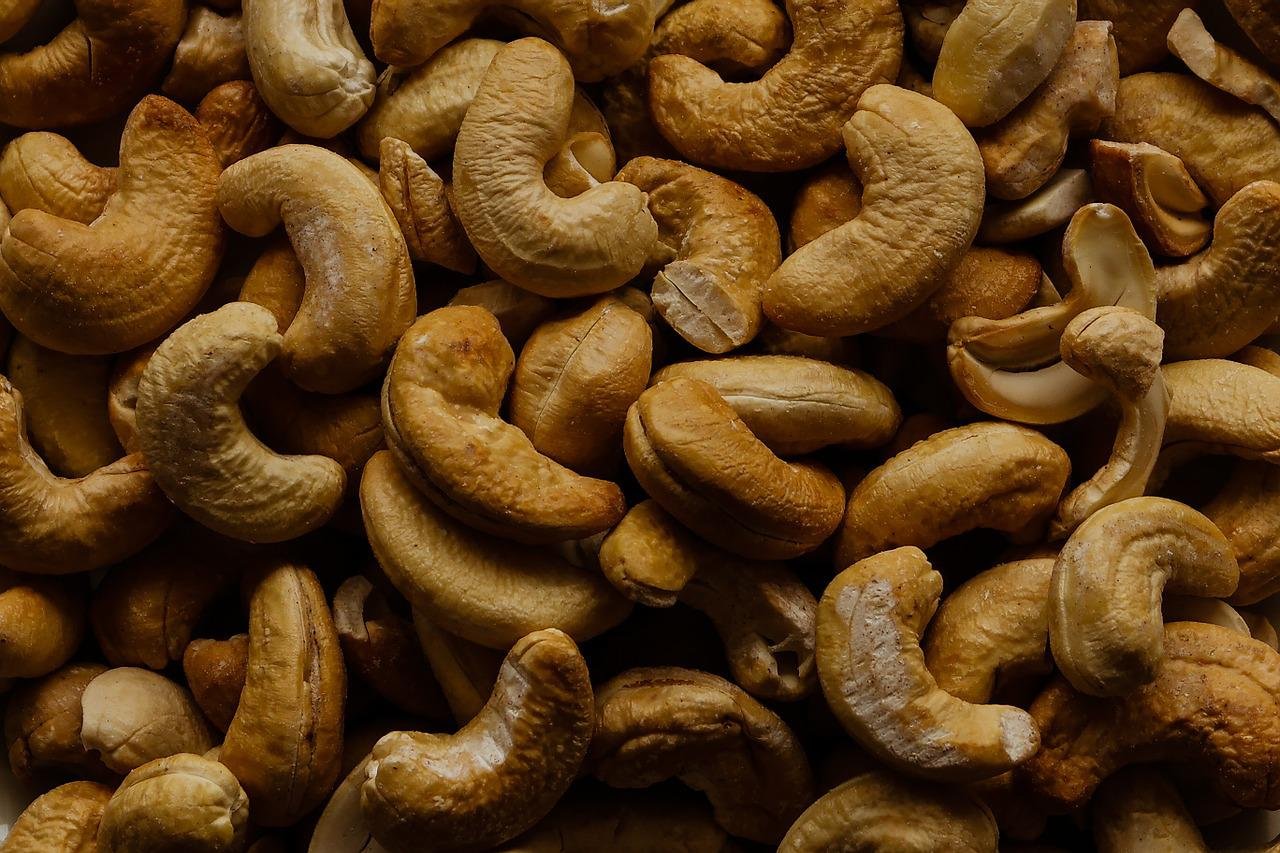Quick Contact
Brief description of cashew nut
Cashew nut is made up of a fruit in which the kernel is embedded. The real fruit of the cashew is commonly a nut. It is a kidney- or heart-shaped achene, in any normal variety. Its color varies from bottle green to grayish brown (dried fruit). The kernel is slightly curved back on itself and forms two cotyledons, representing about 20–25% of the nuts weight. It is wrapped in a thin, difficult-to-remove peel (testa), reddish-brown membrane, which in turn approximates 5% of the whole nut. The annual production of cashew nuts (with shells) is the highest of all tree nuts, with a value of more than 3.5 million tons. The cashew kernel is of high food value with about 40–57% oil and 21% protein contents.

Among tree nuts, cashew ranks third in world economic importance after almonds and Brazil nuts (FAO, 2010). Current world production of cashew nut is 3,720,245 MT on 4,097,637 ha. Vietnam, Nigeria, India, Indonesia and Brazil are currently the world’s leading producers of cashew nuts (FAO, 2010).
USES
It is an important delicacy, which is mainly used in confectionery and as a dessert nut. Cashew is globally one of the most popular tree nuts and is eaten as a snack or incorporated as an ingredient in a variety of foods. Cashew ranks third in the international tree nut trade with over 20% of the market. The kernel can be roasted and consumed; it can also be used as an adjunct in chocolate and chicken feeds


Cashew Producing States
- Kaduna
- Abia
- Kogi
- Enugu
- Kwara
- Oyo, Niger, Imo, and Abuja FCT
Importers of Raw Cashew Nuts (Far-East Asia)
- Vietnam
- India
- China
- Japan
- Thailand
- South Korea
- Singapore
- Malaysia
- Indonesia
- Cambodia
- Philippines
